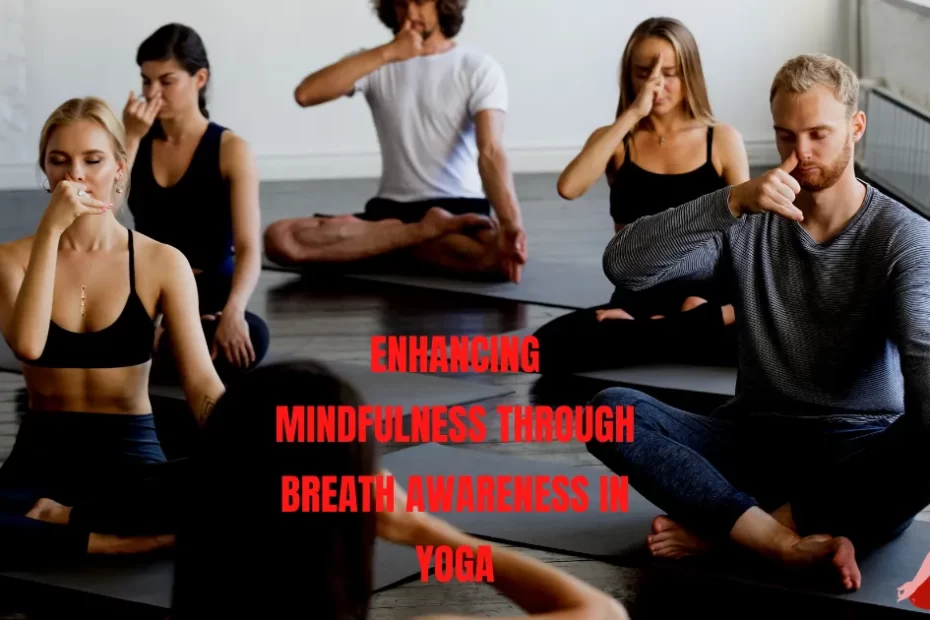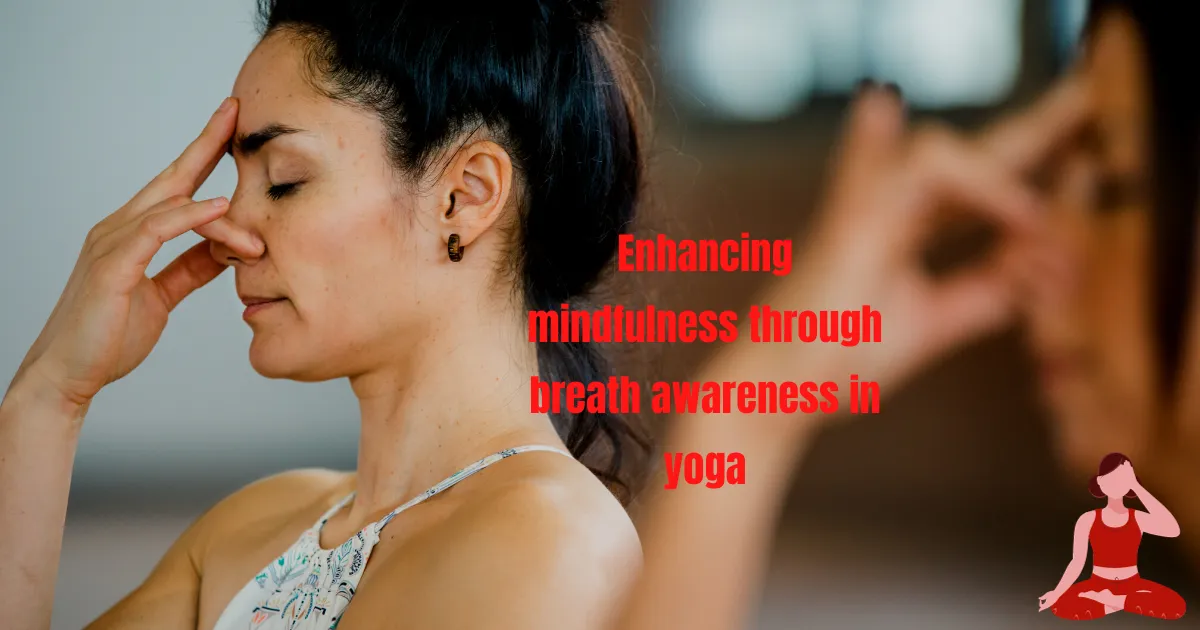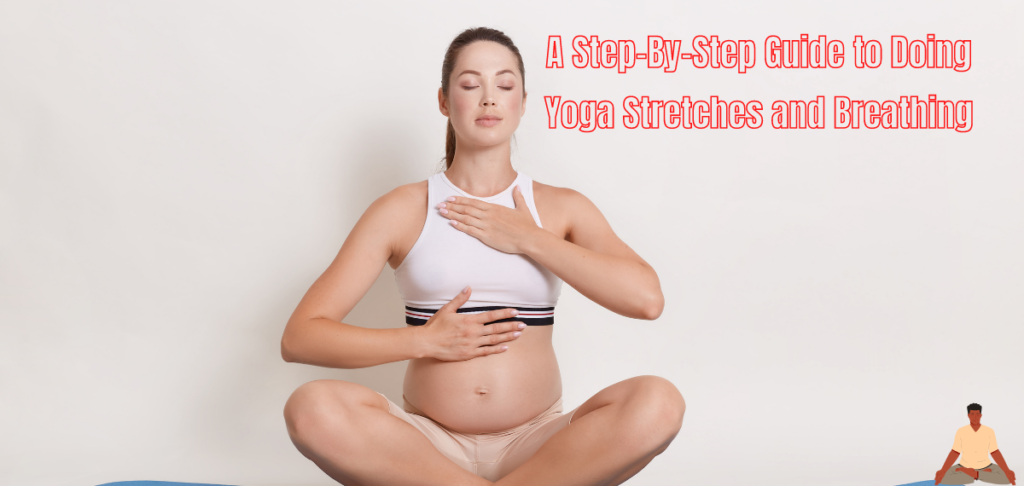Last updated on November 8th, 2023 at 08:05 pm
Proper breathing and stretching techniques are essential components of a fulfilling yoga practice. They not only enhance the overall experience but also provide numerous physical and mental benefits. In this guide, we’ll explore the significance of breath control and stretching in yoga and delve into specific techniques and exercises for intermediate practitioners.
The Significance of Breath Control in Yoga:
Breath control, known as pranayama, is a fundamental aspect of yoga practice. It helps increase awareness, focus, and energy within the body. Proper breathing techniques oxygenate the blood, promote relaxation, and calm the mind. By synchronizing breath with movement, you can create a harmonious flow in your practice.
Different Breathing Techniques:
Ujjayi Breath: This is the “oceanic” or “victorious” breath. Inhale deeply through your nose, slightly constricting the back of your throat to create a soft hissing sound. Exhale with the same constriction. Ujjayi breath warms the body and promotes concentration.
Kapalabhati Breath: Also known as the “skull-shining” breath, Kapalabhati involves forceful exhalations through the nose while keeping the inhales passive. It energizes the body and clears the mind.
Nadi Shodhana Pranayama: This alternate-nostril breathing technique balances the left and right sides of the brain. Close your right nostril with your thumb, inhale through the left nostril, then close the left nostril with your ring finger and exhale through the right. Repeat this pattern.
Synchronizing Breath with Movement:
In yoga poses, breath and movement are intertwined. For instance, in a Sun Salutation, you inhale as you raise your arms overhead and exhale as you fold forward. Syncing breath with movement enhances flexibility, balance, and flow, allowing you to dive deeper into each pose.
Utilize Proper Breathing Techniques (breathing in yoga)
Proper breathing plays a critical role in your yoga practice. It helps to relax and further concentration. While doing each pose, focus on slow, even breaths as you move into the posture and then hold it for several seconds. Inhale on your way into a pose, exhale when holding the posture, and then inhale once again as you transition out of it. Make sure to direct your breath through your mouth or nose depending on the instructions given by your instructor. Focusing on the counting of breaths is often beneficial because it can keep you in the present moment and open up space for peaceful reflection.
Find a comfortable spot: It is important to find a comfortable space to practice yoga in order to truly get the benefits from it. Look for one that is not too hot or cold and be sure to place your mat or other materials on a flat surface. Reduce external noise and distractions as much as possible.
Warm up your body: Gently warm up your muscles with basic exercises such as shoulder rolls, side bends, chair twists, ankle circles etc. This will prepare you specifically for stretching and also increase circulation throughout the body before getting into deeper poses.
Start with breathing techniques: Start by consciously slowing down your breath and counting slowly in sets of 4 (inhale 1-2-3-4, exhale 1-2-3-4). As you begin to become more familiar with this type of breathing and its powerful effects, try some pranayama exercises such as alternate nostril breathing or even kapalabhati and ujjayi pranayama (breathing in yoga).
Focus on different muscle groups: While doing these stretches focus on different muscle groups within the body from head to toe — neck, shoulders, back, chest, abdomen/core, legs etc.). Take your time over each area and hold each stretch for around 10 seconds or a few deep breaths depending on what feels comfortable for you mentally and physically at any given time.
Use props: Props such as blocks can really help enhance stability when performing yoga postures so that we can fully embody each pose without compromising alignment or adding stress simply due to lack of flexibility or experience with the pose itself.
Create balance between intensity levels & relaxation: Alternate between dynamic stretching movements while integrating moments of rest – go inward and move slowly - just take a break! Taking this kind of approach provides an increased level of awareness while allowing us greater access into our bodies proprioception system and sense of physical intuitive beingness in our inner world too when done with mindful intent & diligence -- vital shadows required for sustainable long term growth in any Yoga practice!
Cool down & integrate changes: Once you’ve completed all the stretches spend 5+ minutes lying still perhaps focusing solely on following your breath whilst feeling any sensations (spaces/shifts) that may have been created from doing your practice beforehand...Savasana (corpse pose) is an excellent way also to let everything settle; considering how best we can use what has changed within & take it forward into our day harmoniously!
The Role of Stretching in Yoga:
Stretching plays a pivotal role in yoga as it promotes flexibility, elongates muscles, and prevents injuries. It also aids in muscle recovery, reducing soreness after vigorous practice.
Enhance Your Stretch Through Mindful Awareness
Once you find your rhythm, start to notice the ever-changing physical sensations inside and outside of your body. Observe how each breath brings nourishment to your deepest muscles with oxygen and energy while its outward flow melts away stress and tension. Imagine that you’re the artist creating a picture through poses, breaths, and relaxation. This mindfulness will help to enhance your stretch as well as bring a deeper connection between mind and body.
Learn Advanced Stretching Techniques (yoga stretches)
Once you’ve mastered the basics, it’s time to move on to advanced stretches. Doing modifications of traditional yoga poses helps to increase flexibility and add a new challenge to your practice. Continue to focus on proper alignment and support your body as you work into deeper postures with poses like up-dog, bridge pose, side-angle plank, or expansive versions of warrior poses. As you deepen each posture, find that beautiful balance between effort and surrender to benefit both your mind and body!
Elevate Your Routine with a Meditation Session
Incorporating a meditation session at the end of your practice can help to bring clarity and stillness to the mind. After several minutes of stretching, take some time in a comfortable seated position with your eyes closed.
Begin by focusing on your breath as it inhales and exhales. Notice how your body feels after this yoga practice and sit in gratitude for this moment. Allow any thoughts to come and go, gradually building emotional resilience as you rest deeply in the present moment.
Once you are ready, open your eyes slowly and savor the peace within.
Simple Steps to Properly Execute Yoga Breathing Techniques
Q&A
Why is stretching so important?
There are tons of benefits to stretching. Stretching keeps the muscles flexible, strong, and healthy, and we need that flexibility to maintain a range of motion in the joints. Without it, the muscles shorten and become tight. Then, when you call on the muscles for activity, they are weak and unable to extend all the way. That puts you at risk for joint pain, strains, and muscle damage.
Do You Need to Stretch at All?
It is recommended stretching each of the major muscle groups at least two times a week for 60 seconds per exercise. Staying flexible as you age is a good idea. It helps you move better. For example, regular stretching can help keep your hips and hamstrings flexible later in life (Yoga Stretch).
What Is the Function of Breathing?
There are two phases of breathing: inhaling (taking a breath in) and exhaling (breathing out). When you inhale, the diaphragm — which is the big, dome-shaped muscle located between your chest and abdominal cavities — contracts and moves downward. This creates extra space in the chest cavity, and the lungs expand into it. When you exhale, the diaphragm relaxes as the amount of air in the lungs is reduced.
Yoga Stretches for Beginners
If you’re new to yoga, it’s important to start with basic stretches that are gentle and easy to do. Here are a few yoga stretches for beginners that you can try:
1. Downward dog: Start on your hands and knees, with your hands shoulder-width apart and your knees hip-width apart. Lift your hips up and back, straightening your arms and legs. Hold for a few breaths, then release.
2. Cat-cow stretch: Start on your hands and knees, with your hands shoulder-width apart and your knees hip-width apart. Inhale and arch your back, bringing your head up and looking forward. Exhale and round your spine, tucking your chin to your chest. Repeat for a few breaths.
3. Child’s pose: Start on your hands and knees, then shift your hips back towards your heels. Stretch your arms forward and rest your forehead on the ground. Hold for a few breaths, then release.
Remember to move slowly and listen to your body. If a stretch feels uncomfortable, back off and try something else. With practice, you’ll build strength and flexibility, and be able to try more advanced poses.


